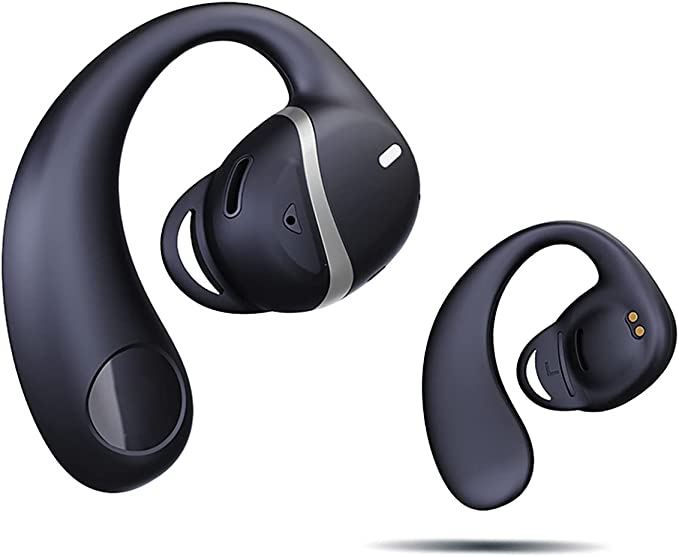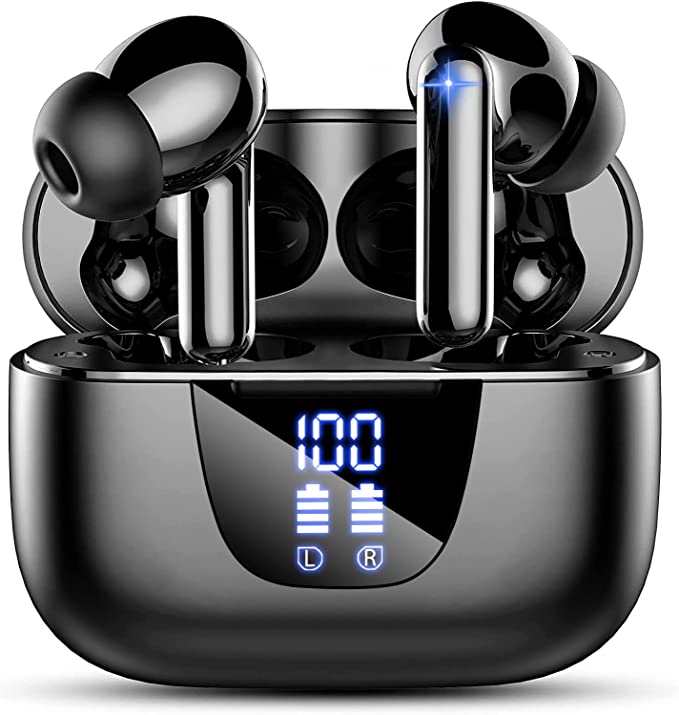We live in a world saturated with sound. From the satisfying thwack of a well-struck nail to the ear-splitting crack of a rifle, the comforting murmur of conversation to the relentless drone of machinery – our ears navigate a complex acoustic landscape. For generations, the primary solution to dangerously loud noise was simple: block it out. Thick earmuffs, dense foam plugs – effective, yes, but they plunged us into an isolated silence, cutting us off from vital warnings, instructions, or the simple awareness of our surroundings. What if there was a smarter way? A way to shield our delicate hearing from harm without sacrificing our connection to the auditory world? This is the promise explored by modern electronic hearing management devices, and today, we’ll delve into the science and real-world considerations behind one such example: the AXIL XCOR PRO Wireless Earbuds.

Sound Advice: Decibels, Damage, and the Science of Hearing Safety
Before we dissect the technology, let’s establish the fundamentals. Sound intensity, what we perceive as loudness, is measured in units called decibels (dB). It’s a logarithmic scale, meaning a small increase in dB represents a large jump in sound energy. A quiet library might be around 30 dB, a normal conversation around 60 dB, and city traffic can push 80-85 dB.
That 85 dB mark is crucial. Health and safety organizations worldwide, like the U.S. Occupational Safety and Health Administration (OSHA), recognize this level as a threshold. Prolonged or repeated exposure to sounds above 85 dB significantly increases the risk of permanent Noise-Induced Hearing Loss (NIHL). This isn’t just about things sounding quieter; NIHL often involves damage to the tiny, delicate hair cells within our inner ear (the cochlea) responsible for converting sound vibrations into electrical signals our brain interprets. Once damaged, these cells generally don’t regenerate. Impulse noises, like gunfire or explosions, which can peak far above 140 dB, can cause immediate, irreversible damage. Protecting our hearing isn’t just about comfort; it’s about preserving one of our most vital senses for a lifetime.
Taming the Peaks: The Science Behind Digital Sound Compression
Traditional hearing protection works through passive attenuation – physically blocking sound waves. Think of it like putting up a thick wall. It reduces most sounds, but indiscriminately. The AXIL XCOR PRO, like many advanced electronic hearing protectors, employs a more sophisticated, active approach centered around Digital Sound Compression, specifically targeting dangerously loud sounds.
Imagine a highly skilled audio engineer sitting inside each earbud with their finger on a volume knob. Their sole job: listen constantly, and the instant a sound exceeds a specific loudness, rapidly turn the volume down for just that peak, then quickly turn it back up as the sound subsides. This is the essence of dynamic range compression in this context. According to AXIL, the XCOR PRO is designed to activate when sounds exceed 85 dB. Unlike simpler “sound-activated shut-off” or “clipping” systems that might abruptly cut off all sound (creating an unnatural silence or distorted noise), compression aims to smoothly and selectively reduce only the hazardous sound levels.
The key benefit? Preserving situational awareness. While the dangerous peak of a gunshot (as claimed by the technology’s function) is compressed to a safer level, softer ambient sounds – a range master’s command, a colleague’s warning, the rustle of leaves, the click of an empty chamber – can theoretically still pass through or be heard immediately after the loud noise subsides. This is a critical advantage in environments where hearing clearly is as important for safety and function as blocking harmful noise. User feedback often reflects this core strength, with individuals reporting the earbuds effectively dampen gunfire on the range while still allowing conversation, fulfilling the primary design goal for impulse noise environments.
. The goal is to restore a sense of auditory normalcy, or even provide a slight boost to help discern faint sounds or conversation in noisy backgrounds. AXIL’s FAQ indicates that the volume of this enhancement can be adjusted by the user via button clicks on the earbuds, allowing some level of personalization.
In theory, this enhancement can be highly beneficial, making instructions clearer or heightening sensitivity to subtle environmental cues. Indeed, some users report hearing better with the enhancement on than with their unaided ears. However, the reality of simple amplification systems can be mixed. The microphones capture all nearby sounds, and amplifying them can sometimes mean boosting unwanted background noise just as much as desired sounds (as one user noted, hearing birds chirping very loudly). Feedback suggests the enhancement can be “hit or miss” depending on the environment and the specific sounds present. Without sophisticated directional microphones or noise reduction algorithms (which are complex and power-hungry, especially in small earbuds), basic amplification can sometimes be a blunt instrument.

Cutting the Cord: True Wireless Freedom and the Bluetooth Connection
Moving beyond the core audio processing, the XCOR PRO embraces the convenience of modern wireless technology. They are True Wireless Stereo (TWS) earbuds. This means absolutely no wires – not between the earbuds and your device, nor between the two earpieces themselves. This grants complete freedom of movement, a significant advantage over traditional wired headphones or even neckband-style wireless earbuds, especially in active scenarios like shooting or physical work where wires can snag or interfere. However, TWS technology itself presents engineering challenges, primarily in maintaining perfect audio synchronization between the two independent earbuds and managing battery life efficiently within such small devices.
Connectivity is handled via Bluetooth 5.2. This is a relatively recent version of the Bluetooth standard. While the specific benefits realized always depend heavily on the chipset used and the device’s software implementation, Bluetooth 5.2 as a standard offers potential advantages like improved power efficiency (especially with LE Audio features, though it’s unknown if the XCOR PRO utilizes these) and potentially more stable connections compared to older versions.
For the user, this translates to the ability to wirelessly stream music, podcasts, or other audio from a smartphone. It also enables hands-free calling, allowing users to take calls without removing their hearing protection – a significant convenience feature. AXIL even mentions potential compatibility with some Bluetooth-enabled two-way radios, further extending communication possibilities. In practice, users generally report that pairing the XCOR PRO with their phones is straightforward. However, a recurring theme in the provided feedback is poor call quality, with callers reporting the user sounds muffled or distant. This suggests that while connectivity is present, the microphone pickup or processing for voice calls may be a weaker aspect of the design. Similarly, music playback quality is described by some users as merely “mediocre,” implying that audiophile-level sound reproduction might have been deprioritized in favor of the core hearing protection and enhancement features.

Form Meets Function: Design, Fit, Durability, and Daily Use
The physical design of any in-ear device is critical to its performance and comfort. The XCOR PRO utilizes an in-ear form factor, relying on ear tips to create a seal within the ear canal. This seal is paramount. Acoustically, it’s essential for blocking external noise effectively (allowing the electronic protection to work optimally) and for delivering sound correctly, especially lower frequencies. Ergonomically, a good seal is vital for comfort and ensuring the earbuds stay securely in place during activity.
Recognizing that ear canals vary significantly in size and shape, achieving this perfect seal can be a process of trial and error. AXIL includes multiple ear tip sizes (implied by user comments about finding the right fit), and finding the one that provides both a secure seal and long-term comfort is key. User feedback highlights this variability: some find the XCOR PRO comfortable for hours, while others report discomfort or ear fatigue relatively quickly, even after trying different tips. There’s no substitute for individual fit assessment here.
Interaction with the earbuds is managed via touch controls. This offers a modern, button-free aesthetic, but usability can sometimes be tricky. Some users reported the activation sequence (like turning the enhancement on/off) could be “fiddly.”
Regarding durability, AXIL makes several claims: the earbuds are “Dust & Water Resistant” and “Wind Resistant,” and constructed from “medical-grade components.” However, it’s important to parse these claims carefully. “Resistant” is not the same as “proof.” Crucially, no specific IP (Ingress Protection) rating is provided in the source material. An IP rating (like IPX4 or IP67) offers a standardized measure of protection against dust and water ingress; without it, the level of resistance is undefined. The “Wind Resistant” claim is also challenged by user reports of significant wind noise interference. This isn’t entirely surprising; small microphones placed on the exterior of an earbud are inherently susceptible to wind turbulence creating noise that can overwhelm the desired sound pickup. Furthermore, despite the “medical-grade components” claim, some users described the overall build quality and the charging case as feeling “chintzy” or flimsy, particularly given the price point.
Finally, battery life is a practical anchor. The claimed figures (up to 12 hours enhancement only, 6 hours Bluetooth only, 4 hours combined) seem reasonable for TWS earbuds, and the charging case, providing up to three additional charges, significantly extends usability away from a power source.
The Sound Synthesis: Understanding the AXIL XCOR PRO in Context
So, what emerges from this exploration? The AXIL XCOR PRO earbuds represent a sophisticated attempt to integrate multiple audio technologies into a single, compact device. They aren’t just earplugs, nor are they just headphones. They aim to be an active sound management system, intelligently balancing hearing protection (via claimed >85 dB compression), situational awareness (via adjustable enhancement), and modern wireless convenience (via TWS Bluetooth 5.2).
The technology holds clear promise, particularly for its intended niche: individuals in environments with loud impulse noises (like shooting ranges) who critically need to protect their hearing while remaining aware of their surroundings. In this core function – dampening loud reports while allowing voices through – user feedback suggests they can perform well.
However, like any complex technology packed into a small form factor, there are inherent trade-offs and limitations. The enhancement feature, while useful, may not discriminate perfectly between desired and undesired sounds. Bluetooth connectivity, while convenient for music, appears compromised for voice call quality based on reports. Comfort is highly subjective and dependent on individual ear anatomy. Durability claims lack the specificity of standardized ratings, and real-world factors like wind can challenge performance. The perceived build quality may not meet everyone’s expectations for the price.
Ultimately, understanding the AXIL XCOR PRO isn’t about seeking a perfect, do-it-all device. It’s about understanding the specific problems it tries to solve using specific technologies, and recognizing both the potential successes and the inherent compromises reflected in user experiences. It’s a specialized tool. Knowing how it works – the science of compression, the basics of amplification, the realities of TWS and microphone placement – empowers potential users to make a more informed choice about whether its particular blend of capabilities and limitations aligns with their unique needs, priorities, and tolerance for those trade-offs.
As technology continues to evolve, the quest for the perfect balance of hearing protection, auditory awareness, and seamless connectivity will undoubtedly continue. Devices like the XCOR PRO, emerging from small business innovators like AXIL, are important steps on that journey, pushing the boundaries of how we interact with and manage the complex soundscape of our modern world. And perhaps the most valuable takeaway is the reminder itself: our hearing is precious, and understanding the tools available to protect and manage it is an investment in our long-term well-being.



